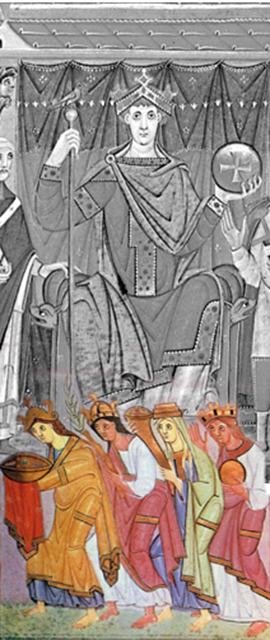Medieval Steppe Peoples – Identities and Ways of Life
For a long time, the ethnic identity of steppe peoples was taken for granted. Under a quickly-changing surface of shifting groupings, a continuity of stable underlying identities was assumed (for instance, Turks, Mongols or Hungarians). This allowed reaffirming their essential otherness, or appropriating their distant history in narratives of national history. In my 1988 monograph about “Die Awaren” and in a number of articles on Huns, Avars, Bulgars and Hungarians, I have sought new approaches to issues of identity in the European steppes. The analysis is based on the assumption that groups are not ethnic in themselves. Ethnicity is a principle of organization of the social world which comes alive through communication and through acts of identification. Its relevance, however, may have been quite different for different actors (in-group and out-group in the steppe, contemporary observers outside the steppe zone, modern researchers etc.).
This work continues in the context of very lively research on the Central Eurasian steppes, and of impressive progress in Avar archaeology. The preparation of an English edition of the book on the Avars has given me the occasion for a thorough revision and updating; publication is planned for 2017 or 2018. The book covers all aspects of Avar history in Europe, including a synthesis of archaeological evidence. Furthermore, I am pursuing a number of parallel studies, for instance on the Central Asian origins of the European Huns and on the rather different types of identity that helped to integrate the Hun, Avar and Bulgar polities.
Publications
- Walter Pohl, Die Awaren. Ein Steppenvolk in Mitteleuropa, 567-822 n. Chr. (München 3. Auflage 2015).
- Goths and Huns, in: Companion to Ethnicity in the Ancient Mediterranean, ed. James McInerney (Oxford 2015) 555-68.
- Migrations, ethnic groups, and state building, in: The Cambridge Companion to the Age of Attila, ed. Michael Maas (Cambridge 2015) 247-63.
- Huns, Avars, Hungarians – Comparative Perspectives Based on Written Evidence, in: The Complexity of Interaction along the Eurasian Steppe Zone in the First Millennium CE, ed. Jürgen Bemmann/Michael Schmauder (Bonn 2015) 693-702.
- Pohl, Ethnicity and empire in the Western Eurasian steppes, in: Empires and Exchanges in Eurasian Late Antiquity. Rome, China, Iran, and the Steppe, ca. 250–750, ed. Nicola di Cosmo/Michael Maas (Cambridge 2018) 189-205.
